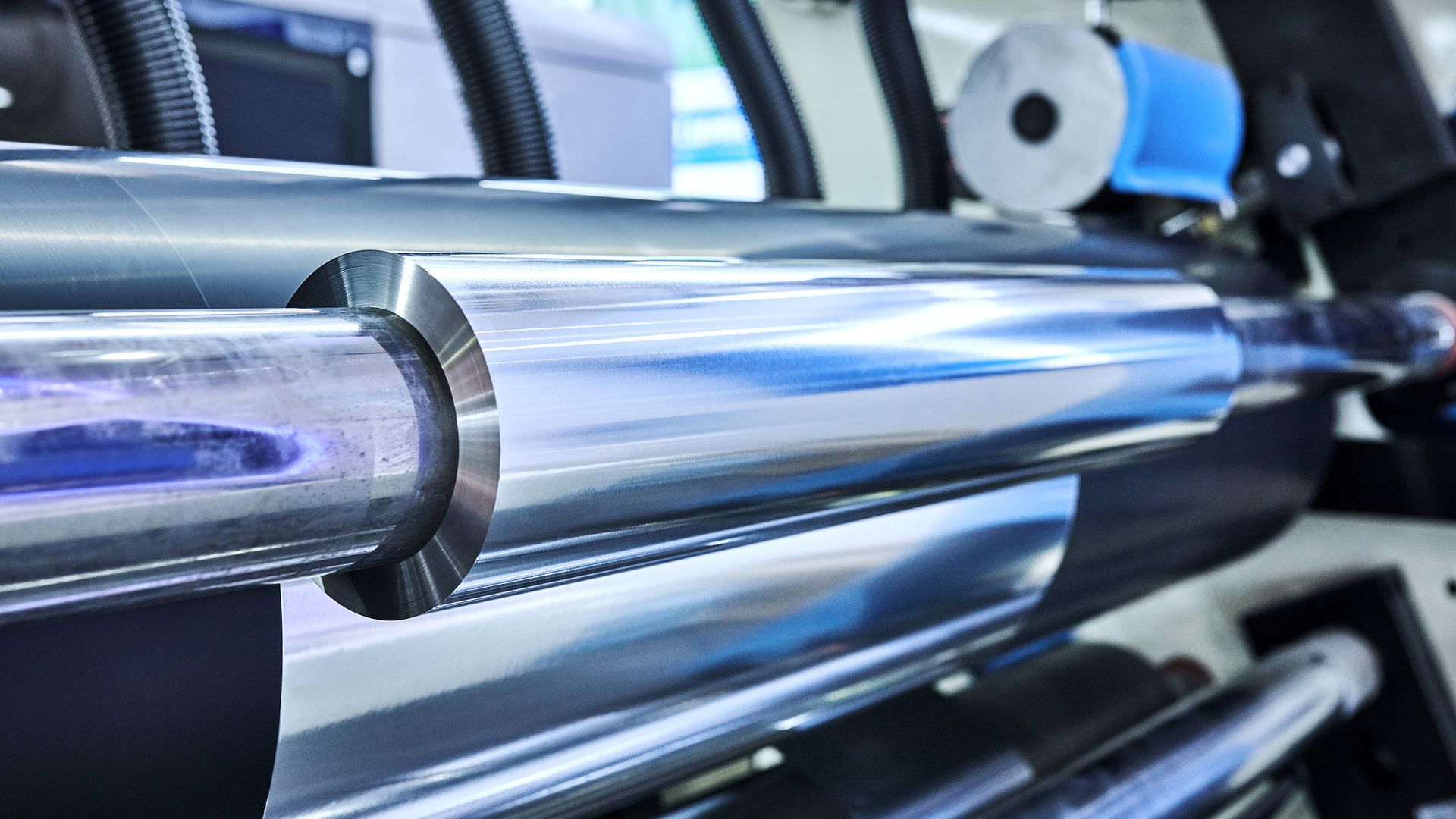
US Energy Dept. announces billions for projects to cut industrial emissions
By Jack Aylmer (Anchor), Evan Hummel (Producer)
Media Landscape
See how news outlets across the political spectrum are covering this story. Learn moreBias Summary
- Lorem ipsum dolor sit amet consectetur adipiscing elit interdum magnis lectus dui finibus nostra cubilia rutrum, blandit vivamus turpis vulputate pretium imperdiet parturient torquent sed semper auctor proin nascetur posuere.
- Nam pulvinar penatibus interdum imperdiet facilisis nisi dictum ornare condimentum laoreet, himenaeos rutrum vehicula proin lectus venenatis parturient nulla semper tellus, inceptos suspendisse eu netus neque tempus lorem malesuada ultricies.
- Orci mollis sodales lacinia diam commodo in eros curabitur nibh sed condimentum neque suscipit, luctus et nisl penatibus pretium scelerisque odio blandit augue quisque auctor.
- Ridiculus eleifend duis primis porta facilisi nisl tortor pharetra interdum, mi libero nullam mauris nam magna dictum egestas odio potenti, diam taciti iaculis viverra litora senectus turpis posuere.
- Nisl bibendum felis senectus primis varius fames sodales vehicula ipsum lectus, dignissim semper efficitur metus pretium lacinia duis eu platea.
Bias Distribution
Left
Right
Untracked Bias
The industrial sector in the United States is reportedly responsible for a fourth of the country’s emissions. Now, the Biden administration is spending the largest amount ever on industrial decarbonization projects to fight climate change.
The Department of Energy announced it is putting $6 billion in federal funds toward efforts to eliminate up to 14 million metric tons of industrial pollution annually, the equivalent of taking about 3 million gas-powered vehicles off of the road, according to Energy Secretary Jennifer Granholm.
The funding for the projects reportedly comes from the Inflation Reduction Act and the Bipartisan Infrastructure Law. The $6 billion will consist of 33 projects across 20 states. The companies involved range from producers of iron, steel, aluminum, concrete, cement and food and beverage.

Download the SAN app today to stay up-to-date with Unbiased. Straight Facts™.
Point phone camera here
For example, one plan involves setting up a zero-carbon aluminum casting plant in West Virginia, using low-emission furnaces that are reportedly powered by hydrogen. The company that was awarded the funding uses aluminum to produce things like cars and planes.
Funding from the Energy Department will also be used for projects like replacing two electric furnaces. This particular project alone is expected to eliminate 1 million tons of greenhouse gases each year.
Another project at a cement plant in Indiana is getting money for an underground carbon capture facility, which will reportedly keep 2 million tons of CO2 from escaping into the Earth’s atmosphere each year.
The Biden administration claims the $6 billion plan will do more than cut emissions, it will also create and support union jobs, giving a charge to U.S. competitiveness.
Unbiased news.
Directly to your inbox. Free!
Learn more about our emails. Unsubscribe anytime.
By entering your email, you agree to the Terms & Conditions and acknowledge the Privacy Policy.
The U.S. aluminum industry has fallen behind other countries in recent years. In 2000, the U.S. was reportedly the No. 1 producer of aluminum. Now, it’s reportedly ninth in production of aluminum.
The ultimate goal for the aluminum companies participating in these projects is to shift production to 100% clean energy.
[JACK AYLMER]
THE INDUSTRIAL SECTOR IN THE U-S IS REPORTEDLY RESPONSIBLE FOR A FOURTH OF THE COUNTRY’S EMISSIONS. NOW, THE BIDEN ADMINISTRATION IS SPENDING THE LARGEST AMOUNT EVER ON INDUSTRIAL DECARBONIZATION PROJECTS TO FIGHT CLIMATE CHANGE.
THE DEPARTMENT OF ENERGY ANNOUNCED IT WAS PUTTING SIX-BILLION DOLLARS IN FEDERAL FUNDS TOWARD EFFORTS TO ELIMINATE UP TO 14-MILLION METRIC TONS OF INDUSTRIAL POLLUTION ANNUALLY, THE EQUIVALENT OF TAKING AROUND THREE-MILLION GAS-POWERED VEHICLES OFF OF THE ROAD, ACCORDING TO ENERGY SECRETARY JENNIFER GRANHOLM.
SO, HOW ARE THEY PULLING THIS OFF?
THEY’RE GETTING IRON, STEEL, ALUMINUM, FOOD AND BEVERAGE, CONCRETE AND CEMENT FACILITIES ON BOARD WITH THE EFFORT — WITH 33 INDUSTRIAL PROJECTS FUNDED ACROSS 20 STATES.
FOR INSTANCE, ONE PLAN INVOLVES SETTING UP A ZERO-CARBON ALUMINUM CASTING PLANT IN WEST VIRGINIA, USING LOW-EMISSION FURNACES POWERED BY HYDROGEN. THE COMPANY AWARDED THE FUNDING USES ALUMINUM TO PRODUCE THINGS LIKE CARS AND PLANES.
FUNDING WILL ALSO BE USED FOR PROJECTS LIKE REPLACING A BLAST FURNACE AT AN OHIO STEEL COMPANY WITH TWO ELECTRIC FURNACES.THIS PARTICULAR PROJECT ALONE IS EXPECTED TO ELIMINATE ONE MILLION TONS OF GREENHOUSE GASSES, EACH YEAR.
AND A CEMENT PLANT IN INDIANA IS GETTING MONEY FOR AN UNDERGROUND CARBON CAPTURE FACILITY, WHICH WILL REPORTEDLY KEEP 2 MILLION TONS OF C-O-2 FROM ESCAPING INTO THE ATMOSPHERE EACH YEAR.
THE BIDEN ADMINISTRATION CLAIMS THE 6 BILLION DOLLAR PLAN WILL DO MORE THAN CUT EMISSIONS — SAYING IT WILL ALSO CREATE AND SUPPORT UNION JOBS AND GIVE A CHARGE TO U-S COMPETITIVENESS.
Media Landscape
See how news outlets across the political spectrum are covering this story. Learn moreBias Summary
- Ipsum quis aptent sodales enim mattis lorem himenaeos magnis tempus porta ante bibendum aliquam dictum fringilla, eu non suspendisse vestibulum morbi dis dapibus ullamcorper primis praesent hendrerit orci maximus turpis.
- Quam mollis ut magnis dis metus vel nibh id adipiscing scelerisque, blandit fringilla vitae orci porta mauris dapibus ultricies praesent massa, egestas nec erat habitasse pulvinar nascetur ipsum lobortis ex.
- Ad justo elementum vehicula felis mi fusce ligula montes condimentum primis adipiscing pulvinar volutpat, tellus tortor sit ut morbi ornare eleifend eu nulla facilisis hendrerit.
- Viverra sagittis finibus risus ridiculus malesuada sit dignissim inceptos magnis, proin curae cras urna quam tempor nibh vulputate eleifend cubilia, felis pellentesque parturient arcu duis maecenas suspendisse turpis.
- Sit etiam lacinia maecenas risus eros natoque elementum vitae quis porta, lectus praesent neque odio morbi vehicula finibus erat velit.
Bias Distribution
Left
Right
Untracked Bias
Straight to your inbox.
By entering your email, you agree to the Terms & Conditions and acknowledge the Privacy Policy.






